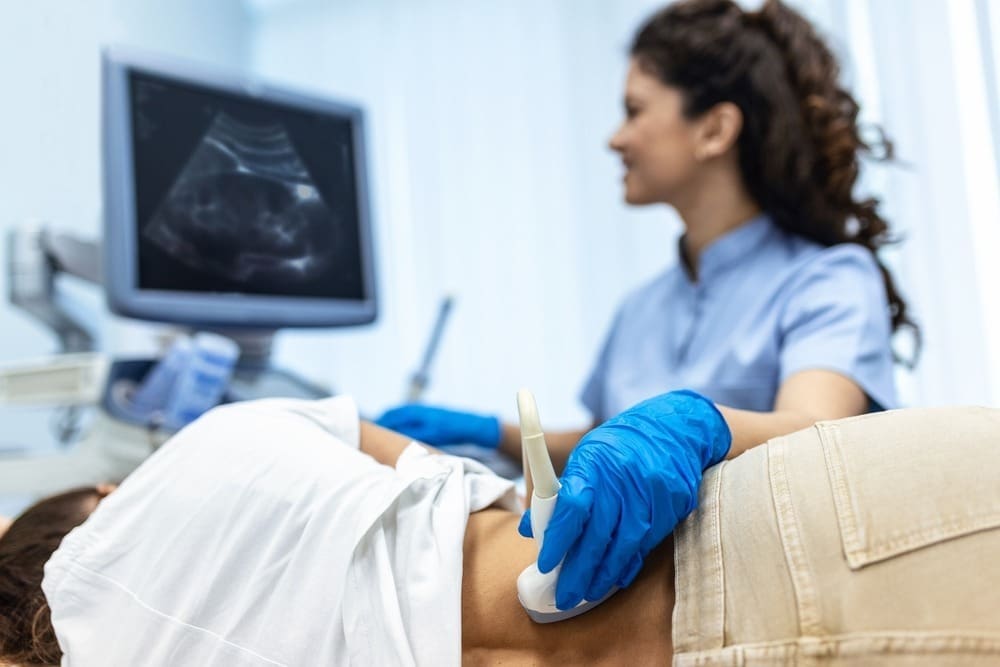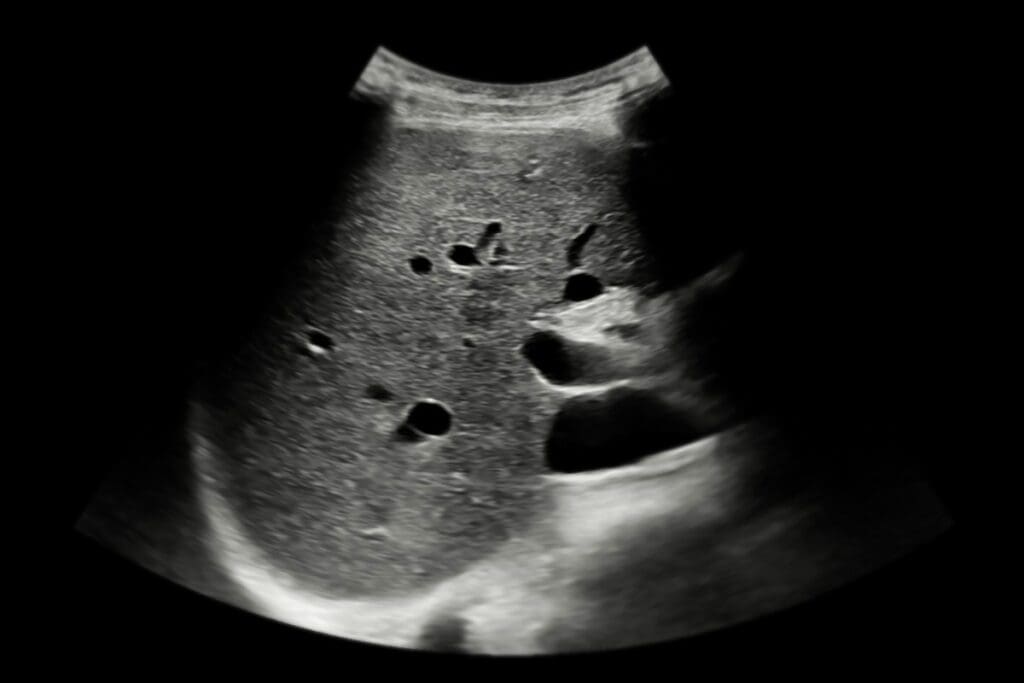Last Updated on November 25, 2025 by
Ultrasound technology is key in spotting kidney problems early. Studies show it’s great at finding chronic kidney disease before symptoms get bad, especially when combined with creatinine level testing.
Ultrasound helps doctors assess kidney structure and detect abnormalities. It does not directly measure kidney function, which is evaluated by blood tests such as creatinine levels. Creatinine is a waste product that shows if the kidneys are not functioning properly when elevated in blood.

Doctors use ultrasound to understand kidney health better. This helps them act fast and can make patients’ lives better.
Kidney function is primarily assessed with blood tests like creatinine and eGFR; combining these with ultrasound improves diagnostic accuracy.
To understand kidney failure, we need to know about its diagnostic methods. These methods are key to caring for patients. Kidney failure happens when the kidneys can’t filter waste, balance electrolytes, and perform other important tasks.
Kidney failure is when the kidneys slowly lose their function. It can be acute or chronic. Chronic kidney disease (CKD) is a long-term condition that gets worse over time. The estimated Glomerular Filtration Rate (eGFR) blood test helps figure out how well the kidneys are working and the CKD stage.
“The eGFR test measures how well your kidneys are filtering your blood,” says the National Kidney Foundation. “A lower eGFR means more advanced kidney disease.”
There are several ways to diagnose kidney failure:
The eGFR blood test is very important. It gives a number that shows how well the kidneys are working. eGFR values help classify CKD into different stages. This helps doctors decide on treatments and management plans.
Imaging, like ultrasound, is key for checking kidney health. Ultrasound is safe and easy to get. It shows details about the kidneys and any problems.

Healthcare providers use tests, imaging, and clinical checks to fully understand kidney function. Knowing how to diagnose kidney failure is crucial for managing CKD and helping patients get better.
Ultrasound is key to checking kidney health. It’s a safe way to look at the kidneys and spot problems early. This helps doctors find and treat issues before they get worse.
Renal ultrasound uses sound waves to see the kidneys. It checks the size, shape, and position of the kidneys. It also finds any issues in the kidney’s tissues or tubes.
To do this, a gel is applied to the skin over the kidneys. A transducer sends and receives sound waves, turning them into images on a screen.
Several important measurements are taken during a renal ultrasound. These include:
These measurements help understand kidney structure. A thinner kidney cortex and changes in echogenicity can indicate chronic kidney damage but do not directly measure function.

Ultrasound can spot kidney damage signs like size changes, scars, cysts, or tumors. A more echoey kidney cortex might mean chronic kidney disease.
The ACR is also important. High ACR levels can show up on ultrasound as a thinner cortex. This shows how ultrasound and lab tests work together for a full check-up.
Ultrasound helps doctors see how well the kidneys are working. It lets them find and treat kidney problems early.
To understand kidney health, we need to look at both creatinine levels and ultrasound results. These tools give us different but important views of how our kidneys work and what they look like.
Creatinine is a waste from muscle breakdown. The kidneys filter it out. If the kidneys aren’t working right, creatinine builds up in the blood. This means there might be kidney trouble.
Checking creatinine levels regularly helps doctors see how bad kidney problems are. It helps them decide the best treatment.
Important things about creatinine levels are:
Ultrasound imaging shows us what the kidneys look like. It can spot problems like cysts or tumors that blood tests can’t find. It also checks the size and how the kidneys look, which can hint at chronic kidney disease.
Ultrasound is good because:
Using both creatinine levels and ultrasound gives a full picture of kidney health. Albumin levels from blood tests also tell us about kidney damage. Together, these tools help find kidney failure early and track how it changes.
The advantages of using all these tools together are:
By mixing creatinine levels, ultrasound, and other tests like albumin levels, doctors get a clearer picture of kidney health. This leads to better care for kidney disease.
Detecting kidney disease early is key, and an ultrasound is a big help. Chronic Kidney Disease (CKD) goes through stages, each with its own signs. Ultrasound technology can spot these signs.
In the early stages of CKD, ultrasound can spot small changes in the kidneys. It can measure kidney size and echogenicity, which show how healthy the kidneys are. Studies show ultrasound can find problems even when kidney function seems normal.
“Ultrasound is a valuable tool for the early detection of CKD, allowing for timely intervention,” a study in the Journal of the American Society of Nephrology says. Catching CKD early is key to managing it and slowing it down.
As CKD gets worse, ultrasound still offers important insights. It can be seen how much damage there is, like scarring and fibrosis. For example, in stage 3 kidney disease, an ultrasound can show big changes in kidney shape.
These signs show how far the disease has gone. They are important for doctors to make decisions.
Ultrasound is also good at finding specific kidney problems that can lead to CKD. For example, it can spot polycystic kidney disease (PKD) by finding cysts on the kidneys. PKD is a genetic disorder that causes many cysts to grow on the kidneys, hurting their function.
A study in the Kidney International journal showed how accurate ultrasound is in finding PKD. It’s important for managing the condition.
In summary, ultrasound is a powerful tool for finding different stages of kidney disease. Its ability to show detailed images of the kidneys makes it essential for diagnosing and treating CKD and other kidney issues.
New ultrasound tech has made checking kidneys better. These updates help find and treat kidney problems early. They’re key for people with abnormal creatinine levels.
Contrast-enhanced ultrasound (CEUS) uses special agents to see blood flow better. It spots kidney issues and checks blood flow more clearly than a regular ultrasound. This is great for kidney disease patients, giving detailed info on their kidneys.
Doppler ultrasound checks blood flow in the kidneys without hurting them. It helps find problems like blockages or clots. This way, doctors can see how the kidneys are working and catch issues early.
New ultrasound tech, like elastography and 3D ultrasound, is changing how we check kidneys. Elastography shows how stiff tissues are, which can hint at kidney issues. 3D ultrasound gives a full view of the kidney shape, helping doctors make better diagnoses.
These new ultrasound methods are changing kidney care. They give doctors better information on kidney health. As tech keeps getting better, we’ll see even more ways ultrasound helps with kidney disease.
Ultrasound is key in spotting and handling kidney failure. It’s a non-invasive way to get important info. When creatinine levels are high, an ultrasound shows how the kidneys are doing.
Ultrasound checks the size, texture, and blood flow in the kidneys. This helps doctors see how much damage there is. They then use this info, along with creatinine levels, to plan the best treatment.
Using ultrasound in managing kidney failure is very important for patients. It helps find problems early and keep them from getting worse. This leads to better care and results for patients.
Ultrasound helps find kidney failure by checking the kidney’s structure and damage. It looks at the thickness of the kidney’s parts. This shows how healthy the kidneys are.
Ultrasound and creatinine levels work together to check kidney health. Creatinine shows how well the kidneys are working. Ultrasound looks at the kidney’s structure and damage. This gives a full picture of kidney health.
Yes, ultrasound can spot early CKD. It looks for changes in the kidney’s structure. These changes show kidney damage.
Ultrasound is safe, affordable, and quick. It doesn’t use harmful radiation. It’s great for checking kidney health, especially with other tests like eGFR and albumin levels.
eGFR shows how well the kidneys are working. Ultrasound looks at the kidney’s structure. Together, they give a full view of kidney health. eGFR shows function, and ultrasound shows structure.
Yes, ultrasound is very good at finding specific kidney problems. It can see cysts and other issues in the kidneys.
Ultrasound is very useful, but it has limits. It depends on the skill of the person doing the scan. Also, some kidney problems might not show up well on an ultrasound.
New ultrasound methods, like contrast-enhanced and Doppler ultrasound, give more details. They show blood flow and structural issues. This makes diagnosis more accurate.
Subscribe to our e-newsletter to stay informed about the latest innovations in the world of health and exclusive offers!